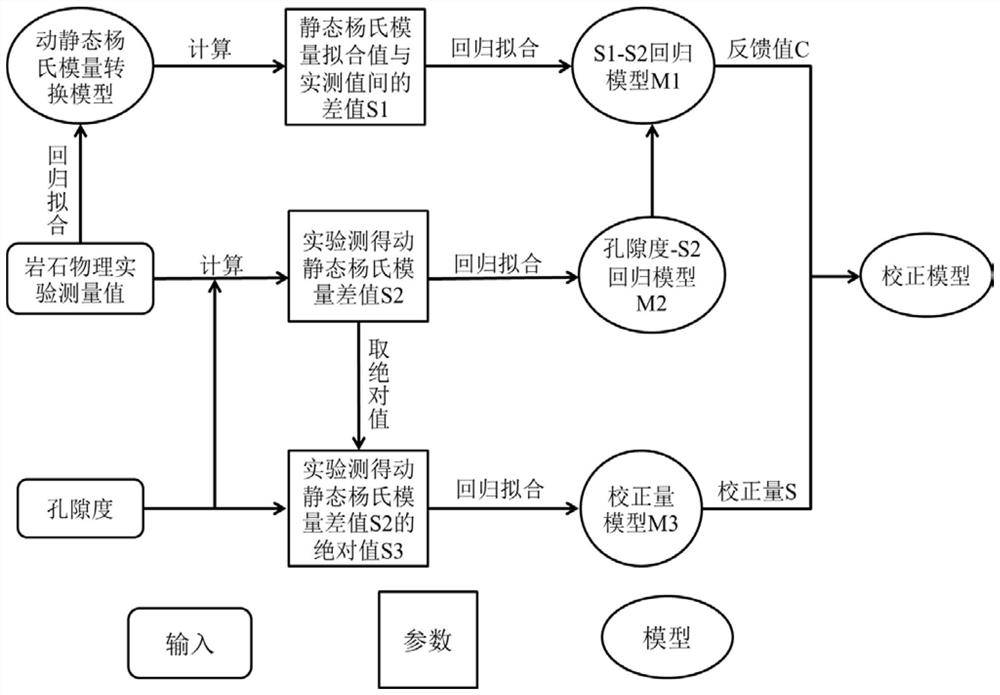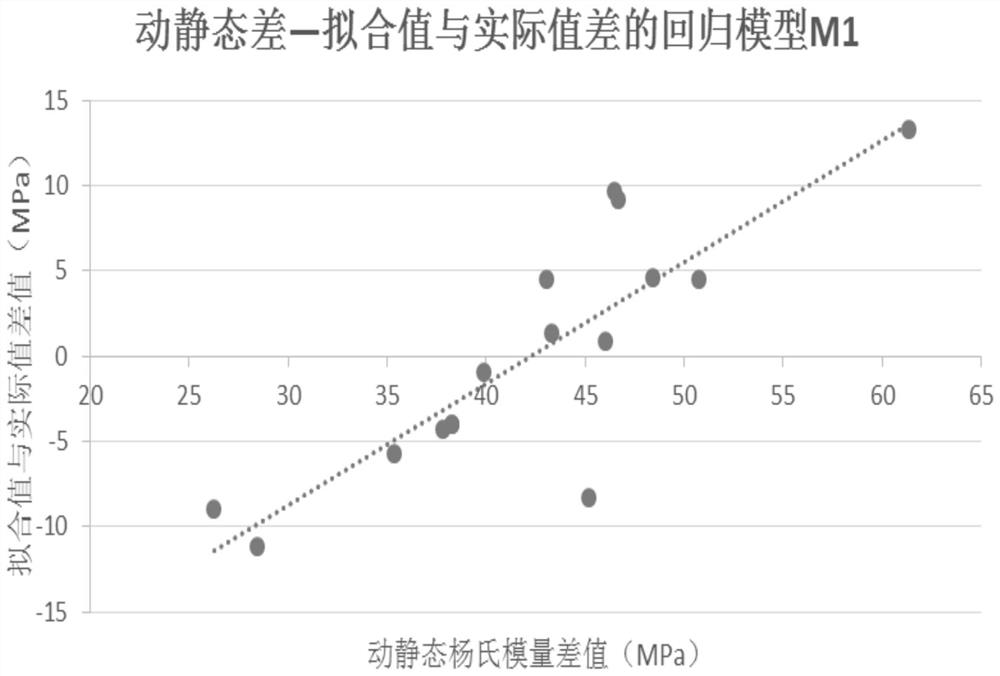Method for improving precision of carbonatite dynamic and static Young modulus conversion model
A technology of static Young's modulus and Young's modulus, which can be used in measuring devices, geographic modeling, geophysical measurement, etc., and can solve the problems of loss of engineering guidance, low accuracy, and lack of dynamic and static Young's modulus conversion Model accuracy and other issues, to achieve the effect of ensuring feasibility and convenience, and good correction effect
- Summary
- Abstract
- Description
- Claims
- Application Information
AI Technical Summary
Problems solved by technology
Method used
Image
Examples
Embodiment Construction
[0033] Below in conjunction with accompanying drawing and certain carbonatite block example well is example, the specific embodiment of the present invention is described further:
[0034] figure 1 Shown is a flow chart of a method for improving the accuracy of the carbonatite dynamic and static Young's modulus conversion model, which specifically includes the following steps:
[0035] Step 1, establishing a dynamic and static Young's modulus conversion model;
[0036] In this embodiment, 16 standard size rock cores of a certain carbonatite block example well are used for petrophysical experiments, and the core size is 250 mm. The porosity, experimental dynamic Young's modulus and porosity, experimental dynamic Young's modulus and The experimental static Young's modulus, the measurement results are shown in Table 1. Using regression analysis software, the experimental dynamic Young's modulus and the experimental static Young's modulus of carbonatite rock samples were linearly...
PUM
 Login to View More
Login to View More Abstract
Description
Claims
Application Information
 Login to View More
Login to View More - R&D
- Intellectual Property
- Life Sciences
- Materials
- Tech Scout
- Unparalleled Data Quality
- Higher Quality Content
- 60% Fewer Hallucinations
Browse by: Latest US Patents, China's latest patents, Technical Efficacy Thesaurus, Application Domain, Technology Topic, Popular Technical Reports.
© 2025 PatSnap. All rights reserved.Legal|Privacy policy|Modern Slavery Act Transparency Statement|Sitemap|About US| Contact US: help@patsnap.com



